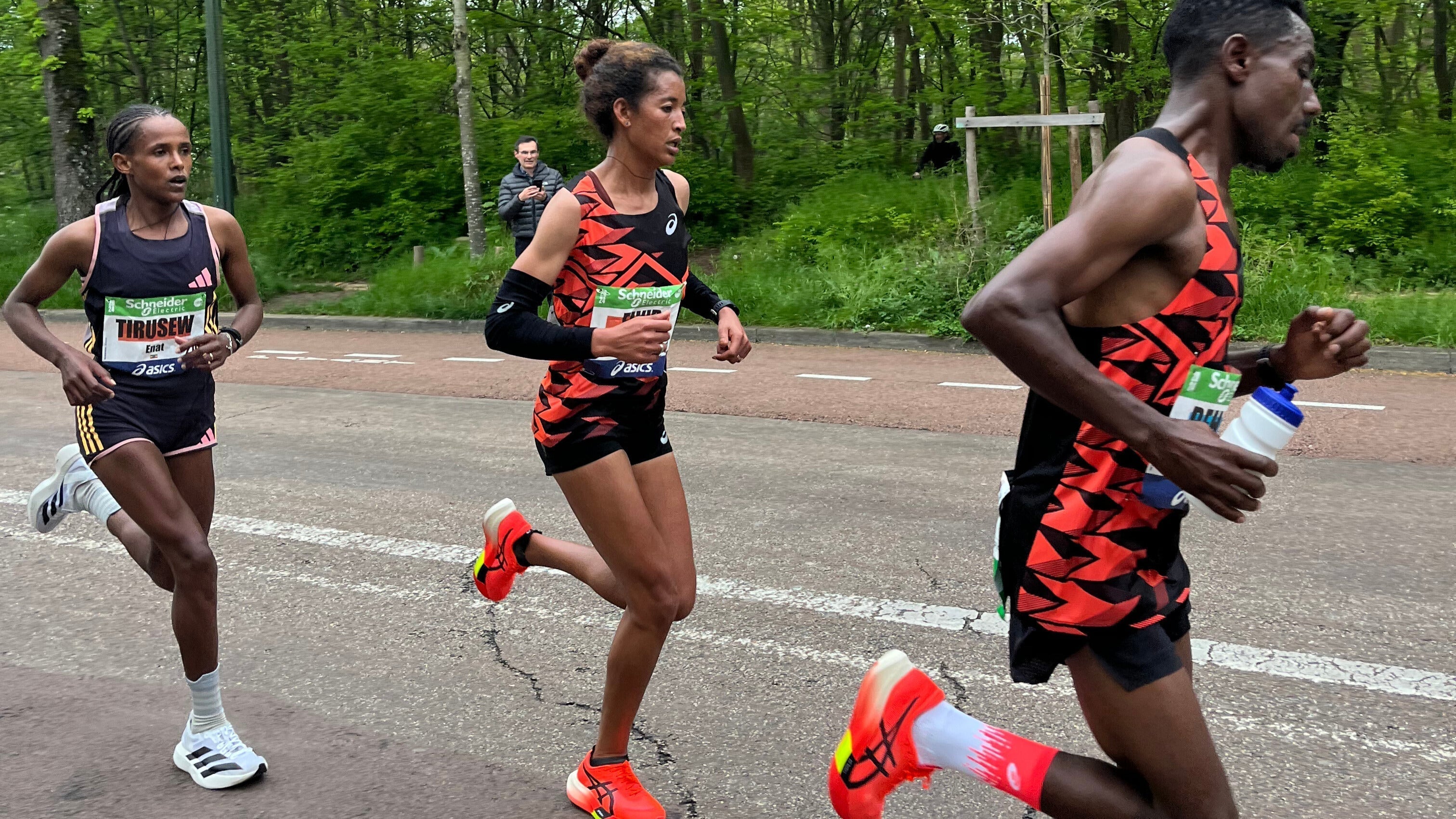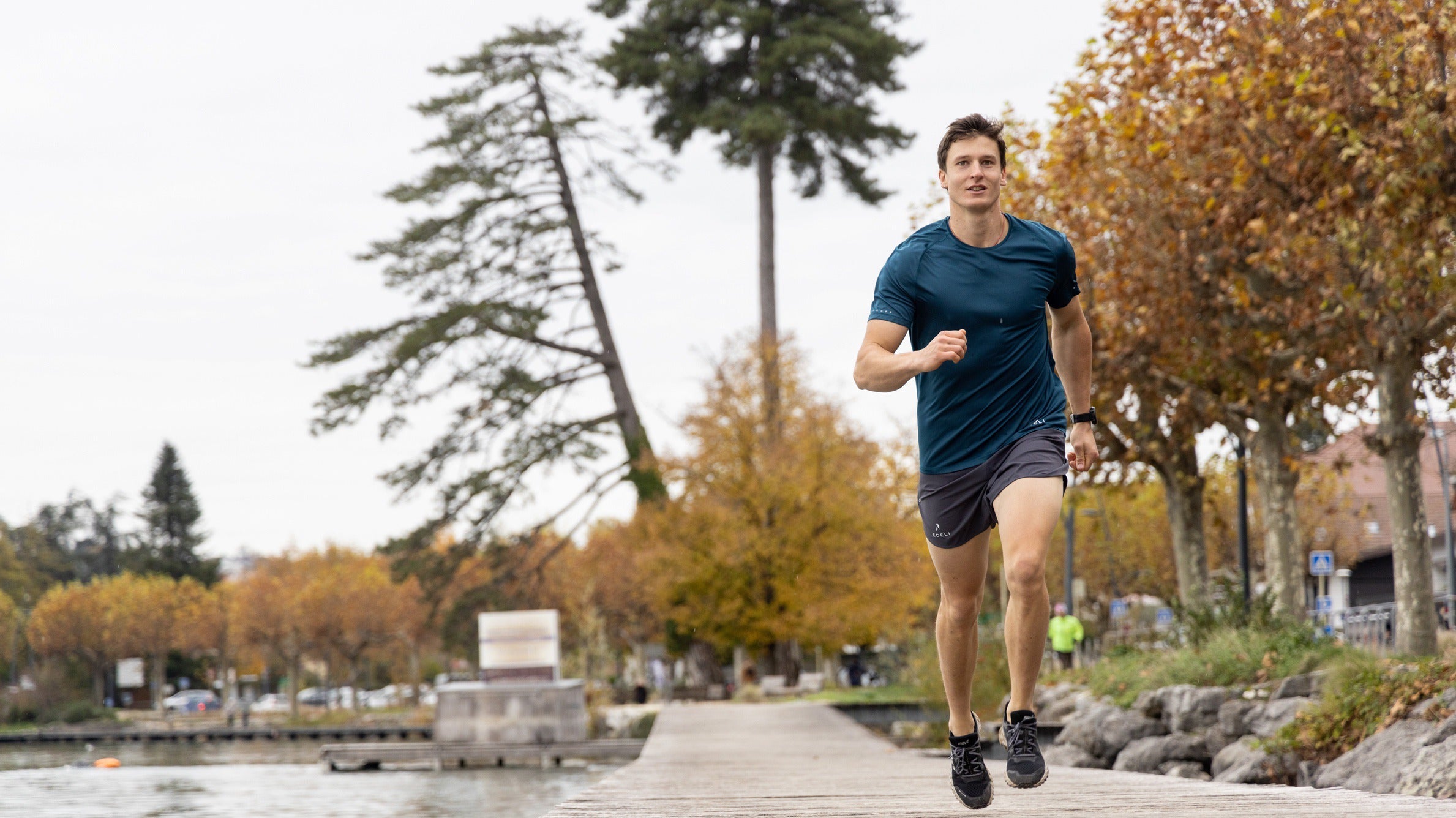
Marathon de Paris: parcours et conseils
The Paris Marathon is one of the biggest marathons in the world, in the Top 5 in terms of number of participants. It is also a marathon that takes place in one of the most visited cities in the world with many famous monuments around the world that can be seen all along the route, from the Arc de Triomphe and the Avenue des Champs-Élysées to the Eiffel Tower, passing also close to Notre Dame, the Musée d'Orsay or the Grand Palais. Even if the route is unique and resembles a privileged visit of Paris by running along its grand avenues and its famous monuments and buildings, it remains a marathon, that is to say a demanding race and a challenge for each participant. Here are some tips to best negotiate this marathon while making the most of the experience and the route. These tips are especially aimed at new marathon runners and marathon runners who are discovering the Paris Marathon for the first time.
The departure and the Champs Élysées
Good news to start with: the start of the Paris Marathon is downhill. Perfect for getting your legs going. The course begins with a long descent of the Champs Élysées, this great legendary avenue that once a year is entirely dedicated to running and welcomes thousands of marathon runners from all over the world. It's a unique opportunity to discover this majestic avenue without any cars, but surrounded by thousands of other runners. Towards the end of the Avenue des Champs Élysées, before turning left, I recommend turning back for just a moment to discover this large avenue entirely covered with runners coming up behind you. It's truly an impressive image that will remain etched in your memory as a marathon runner. Be careful when turning around to secure your footing and not to accidentally bump into another participant. Just a glance of one or two seconds will be enough to see this incredible stream of runners behind you.
The first 10 kilometers
For the first 10 (even 15) kilometers, the course is very smooth and apart from the loop to pass in front of the Palais Garnier, it is a long straight line that will take you to Nation. After the first kilometers that you need to know how to manage gently, almost inside (that is to say a little slower than the target pace) to build up power and wake up your muscles, you can aim to reach your cruising pace, the one linked to your goal for the day, after the loop that takes you in front of the Opera and at the latest after the first refreshment station. Stay focused and firmly set on your target pace. Be careful not to deviate from it by accelerating the pace too much because you will probably be carried by the atmosphere of this big event and your legs will still be fresh. The risk would of course be to have to pay for this excess of enthusiasm during the last third or quarter of the race.
Manage supplies well
A race of this magnitude means you'll be surrounded by a lot of runners all along the course, unless you're an elite runner. Compared to other races you've participated in before this marathon, even though the avenues are quite wide in Paris, you'll be running among a massive crowd of runners. For the first 10 or 15 kilometers, there can be significant pace differences, either because runners find themselves in areas below their ability or because they're feeling energetic. With such a high density of runners, be careful to navigate the aid stations carefully. Two key tips for managing them: the first is to aim for the second half of the aid stations or the last third. Most runners will stop as soon as they see the aid station. This can create small traffic jams at the beginning of the aid stations. So aim for the end of the aid stations rather than the beginning. The second tip is to stay vigilant when you're about to move towards the aid station. Sometimes, runners are a bit in their own world and suddenly discover the aid station. They don't think twice and suddenly cut to their right or left, slowing down to reach the aid station. If you arrive right behind them, it's a perfect fishtail that can turn into a mini-collision or worse, a fall. So stay vigilant during the aid stations, run in the middle of the road and gradually move towards the tables, only slowing down when you're close enough to the aid stations.
Beware of the first difficulty in the Bois de Vincennes
The first difficulty of the course is between the 15th and 17th kilometer with a climb in the Bois de Vincennes. Don't try to pass it by forcing too much to maintain your pace per kilometer. It is better to pass it smoothly, even if it means slowing down your pace a little during this climb and to restart (moderately) in the very gradual descent from the 18th to the 25th kilometer. Try in this descending portion to run as relaxed as possible, to relax your shoulders and arms, to breathe well. You are entering the second half of the marathon, the one where the race will be decided and where the difficulty of maintaining the target pace will increase. And since this portion offers a little respite (all things considered), you must take advantage of it to try to run in the most efficient and economical way possible, that is to say by maintaining a good pace and trying to stay as relaxed as possible.
The long return along the Seine
You've now left the Bois de Vincennes and are starting the second part of the big loop that is the Paris Marathon. You'll now be running from east to west, almost returning to your starting point. This is a relatively smooth section that runs along the Seine from the 25th to the 35th kilometer. About 10 kilometers to negotiate until you enter the Bois de Boulogne. I'm not going to lie: even though this section is quite smooth and consists of long straight lines, it will seem long, very long, and fatigue will start to set in. It will get tougher and tougher. Two little mental tricks for this long section. Set successive mini-objectives for reaching the next aid station. This allows you to break the race into small chunks, and each aid station is like a small victory. And from the 30th kilometer, count down how far you have left to run. If you manage to maintain your pace throughout this section, that's perfect. If you start to get stuck, don't panic and there's no point in pushing yourself too far into the red. It might be wise to start with a slightly lower goal in terms of the final time. We've all been there in one or more races. It's completely normal if it happens. And if you had a time barrier goal, it might be for another day. If, on the other hand, it 'holds' on this long section up to the Bois de Boulogne, that's perfect, you're off to a good start and your marathon will be decided in the Bois de Boulogne and over the last few kilometers to reach your goal. Still, take advantage of the view on your left to catch a glimpse of the Eiffel Tower before turning off towards the Bois de Boulogne a little before the 34th kilometer. Throughout the race and especially during this second half, do not miss the aid stations under any circumstances. Stay fully hydrated and fuel as planned with the foods you tested during your long training runs.
The moment of truth and the Bois de Boulogne hump
Clearly, the Paris Marathon is not the easiest because of the second and long hill in the Bois de Boulogne from the 35th to the 40th kilometer. Fatigue sets in, you are in the most difficult part of a marathon and it is at this precise moment that a hill appears. It is in fact more of a double hill with a slight plateau or slight respite between these two hills. So how to negotiate this last difficulty? There is no miracle solution, but it is of course preferable to adjust your pace and strides (shorter and the body slightly forward). You must be able to save yourself on these last two climbs firstly to avoid breaking down physically and then to be able to finish the last two kilometers downhill and potentially achieve your goal. If the race becomes really, really difficult, slow down and adapt your pace, walk if necessary. You should not hesitate to slow down or stop if necessary to bring your heart rate down. One thing is certain. It will take courage and mental strength to overcome this challenge. That's why this race is called a marathon. It's demanding and tests us when we have to grit our teeth and keep running when our body is just waiting to stop.
Deliverance and the Finish Line
You finally leave the Bois de Boulogne and approach the finish line. Suddenly, there are more spectators on the slopes of the course. They encourage you, applaud you. You are one of the heroes of the day. The spectators admire you and push you to the finish line. These last kilometers are both hard because they are the last and still a little easier because deliverance is so close. Enjoy every moment because these images will remain etched in your memory. Maybe you will catch a glimpse of your friends and family who have come to support you. It's a magical moment. Last bend and the finish line appears at the end of this final stretch. You can smile, raise your arms. You've done it. Perhaps it's your first marathon and you are joining the marathon club. Congratulations on this achievement, you are becoming a bit of a legend in this legendary race, you have just run 42 kilometers and 195 meters and you have fully deserved this medal which will remind you of this unique day.



Leave a comment
This site is protected by hCaptcha and the hCaptcha Privacy Policy and Terms of Service apply.